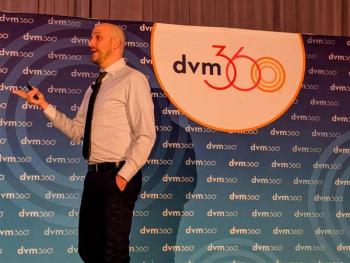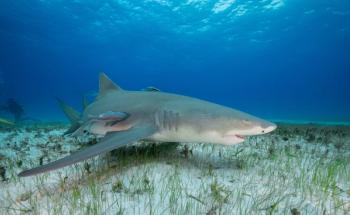
Abdominal ultrasonography of older cats: common findings and their significance (Proceedings)
In cats over 12 years of age there are some typical findings that have little to no clinical significance. The following is a partial list outlining the most common.
In cats over 12 years of age there are some typical findings that have little to no clinical significance. The following is a partial list outlining the most common.
Liver
Diffuse increase in echogenicity
A mild, diffuse increase in liver echogenicity or hyperechoic liver is a common finding in older cats. This can commonly be due to fat deposition. Fat deposition in a liver is not lipidosis. Lipidosis is a disease of hepatic dysfunction due to excessive fat mobilization secondary to starvation. Fatty liver predisposes anorexic cats to lipidosis but an obese cat with a normal appetite does not have lipidosis.
Biliary cystadenomas
These are benign multicystic nodules and masses in the liver found in cats over 11 years of age. When these structures are small they are typically hyperechoic and do not have the classic hypoechoic appearance of cysts. However the small cysts have echogenic walls and allow for acoustic enhancement giving this structure the bright appearance. However FNA of these structures will only obtain fluid. As these structures grow the cysts enlarge and the fluid component becomes more prominent. While these structures do metastasize they can become so large that locally they cause space occupying issues. Typically they can displace the stomach or duodenum and may be associated with vomiting. Biliary cystadenomas can continue to grow. I have identified 8-10 cm cystadenomas in cats 18-20 years old.
Gallbladder wall
Most older cats have hyperechoic gallbladder walls with wall thickness over 0.1 cm. One study identified wall thickness over 0.1 cm as the cut-off for chronic cholecystitis. In my opinion I believe chronic cholecystitis is likely a prevalent, subclinical condition in older cats and mild gallbladder wall thickening is a common finding in older cats.
Spleen
Myelolipomas
These are hyperechoic fat deposits within the spleen of both cats and dogs. They are very common to see in cats. However, keep in mind not all hyperechoic splenic nodules are benign, just a strong majority. The debate as to whether or not to aspirate these nodules is tough and I typically do not aspirate hyperechoic splenic nodules.
Parenchymal mottle
Many older cats have a slight splenic mottle and this is becoming more common with better ultrasound technology. The extremely mottled parenchyma is typically associated with infiltrative neoplasia such as lymphoma, multiple myeloma or mast cell disease. The subtle mottle is more commonly associated with hyperplasia or splenitis. Subtle splenic mottle should be aspirated when unexplained illness is present however prepare the owner for an unimportant cytology result.
Kidneys
Decreased corticomedullary definition
Most older cats have some degree of chronic renal disease and chronic renal disease on ultrasound most commonly manifests as a decrease in cortiomedullary definition. This finding is so common it becomes a standard in most reports however its significance needs to be related back to the blood work and clinical signs. If underlying renal disease is suspected a Resistive Index or RI could be performed to assess for interstitial disease.
Renal mineralization
Another common finding in most older cats due to some degree of chronic renal disease. Many times this mineralization can reside at the corticomedullary interface and cause a medullary rim sign. However, a medullary rim sign alone is not considered an indicator of renal disease but most be present with other renal ultrasonographic changes to be considered a significant finding. Again If underlying renal disease is suspected a Resistive Index or RI could be performed to assess for interstitial disease.
Mild renal pelvic dilation
A very common finding in cats with mild, early clinical renal disease (PU/PD) or undergoing IV fluid therapy. This finding can also be present in cats, and dogs, with pyelonephritis. I will typically recommend a urine culture when this is present but urine cultures in cats are frequently unrewarding even when pyelonephritis is present.
Adrenals
Mineralization
Approximately 30% of cats have focal or multifocal adrenal mineralization. Unlike the dog, adrenal mineralization in cats is considered an incidental finding at this time. In the future a pathologic process may be identified and associated with this finding but our current understanding of this finding is that it is benign. Adrenal mineralization will be seen as hyperechoic foci with associated shadowing.
Pancreas
Hyperechoic parenchyma
Another common finding in older cats. While I suspect this finding to be associated with chronic pancreatitis and potentially pancreatic fibrosis this has not been proven and many times these cats do not have clinical evidence of pancreatic disease. Chronic disease affecting the pancreas, biliary tree and GI tract seems to be a major finding in cats.
Hypoechoic nodules
Regenerative pancreatic nodules are considered a benign finding when found alone. Multiple pancreatic nodules measuring 1 cm or less in diameter are typical of regenerative nodules. There has been no association with neoplasia or chronic pancreatitis in these cases. fPLI testing is typically normal and FNA does not reveal evidence of neoplasia. Solitary pancreatic lesions approaching 2 cm or with mineralization become more of a concern.
Pancreatic duct dilation
Duct dilation without any other finding is considered incidental. The upper limit of normal for pancreatic duct diameter has been documented at 0.78 cm and this finding without any other pancreatic change is typically an incidental finding.
Small intestine
Mild, diffuse muscularis thickening
Typically associated with IBD this is a common finding in older cats. Significance depends on clinical signs. While I suspect all of these cats have chronic intestinal change, a lack of clinical signs makes this an honorable mention in a report instead of a headliner.
Other insignificant findings in older cats include mild lymph node enlargement with a hyperechoic parenchyma, urinary bladder sediment and hyperechoic, non-dependent urinary bladder material thought to represent fat within the urine.
Newsletter
From exam room tips to practice management insights, get trusted veterinary news delivered straight to your inbox—subscribe to dvm360.






